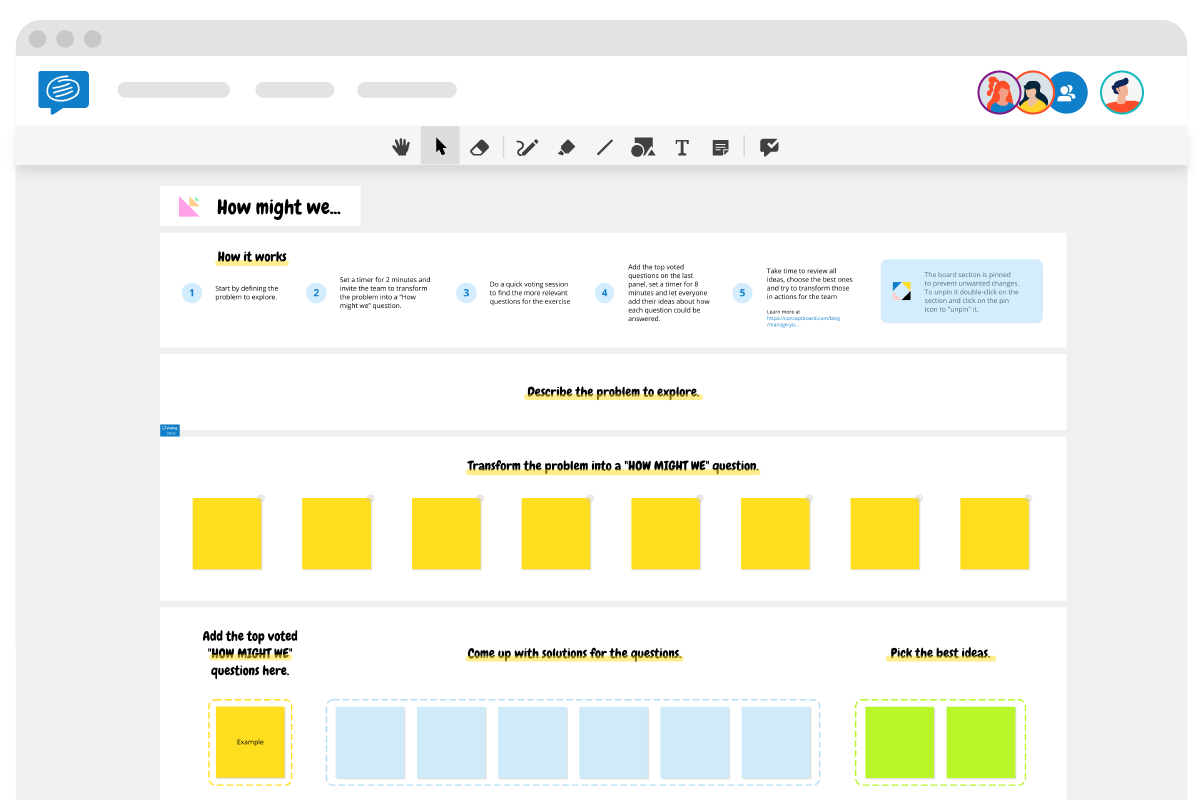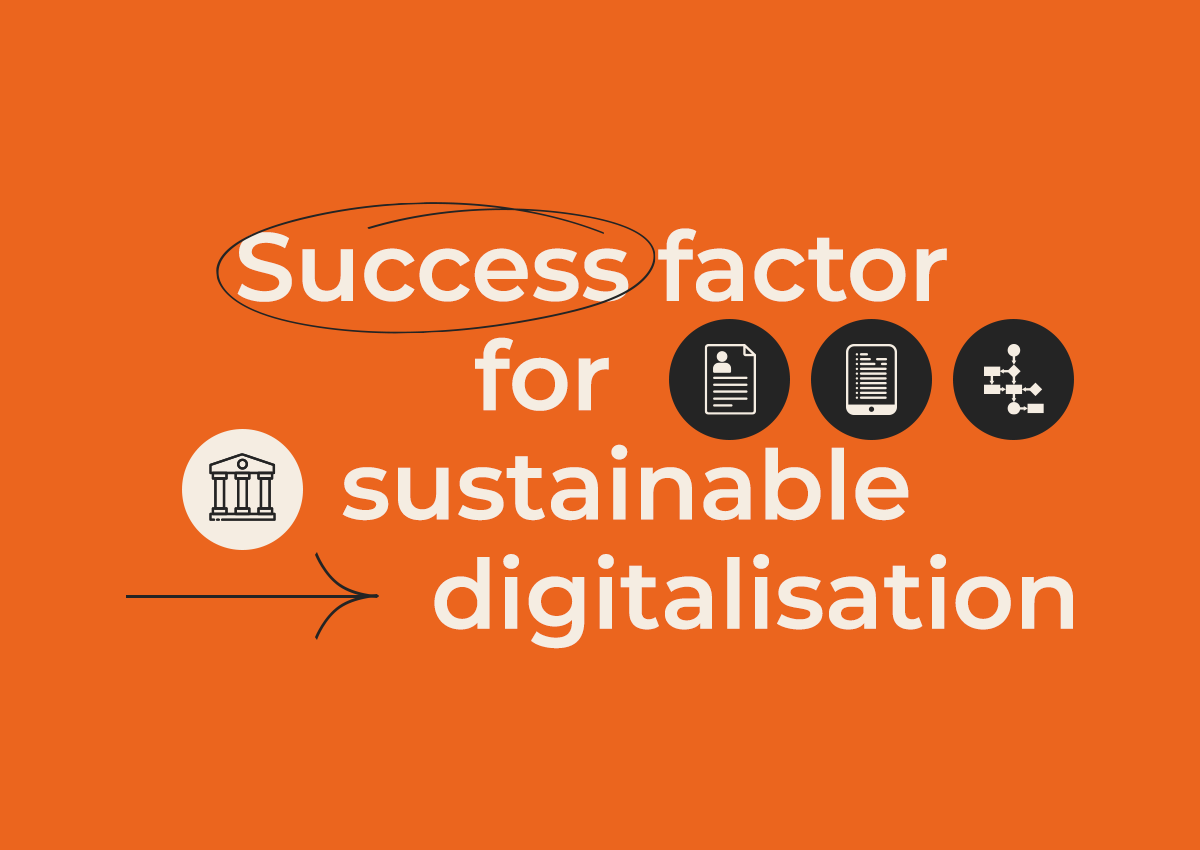This post is also available in: German
Some of the world’s biggest companies, including Google and Facebook, have introduced three simple words to spark innovation: How Might We.
The How Might We technique employs a language trick to open up creative thinking. Firstly, by asking how might we, instead of how will we, you encourage a multitude of related ideas, rather than focusing on just finding the answer. Secondly, it allows you to “to defer judgment, which helps people to create options more freely, and opens up more possibilities,” writes the Harvard Business Review.
Everyday, teams face problems that need solving. The bigger the problem, the more creative the solution needs to be. So if your team struggles when it comes to innovating, it might be time to introduce How Might We…
Let’s take a look at how to use our collaborative How Might We template as the backbone for your brainstorming and ideation. If you’d like to explore additional brainstorming techniques, we’ve rounded up 15 brainstorming techniques and templates you can use collaboratively with your team.
Ideation in Design Thinking
Design Thinking is a way of flipping problems on their head and focusing on the human needs behind the problems. By asking different questions, we will get different solutions. That is why so many teams are running How Might We workshops during the ideation phase of Design Thinking.
But it’s important to complete the first two steps: building customer empathy and defining the problem, as they will ensure you are looking at the problem in the right way.
How Might We questions
At its heart, How Might We is simply another way of brainstorming. But it’s gaining popularity among business leaders thanks to its simple way of reframing problems into opportunities. Because it implies that a solution can be found, we just need to do some work to find it!
How: Suggests we do not yet have the answer, but it allows us to explore a range of concepts instead of jumping straight into the solutions.
Might: Places emphasis on the possibility that there are many ideas that could lead to a solution, permitting everyone to contribute without judgment.
We: Frames the problem as one that can only be solved through collaborative problem-solving and teamwork.
How Might We statements
In Design Thinking it’s important to frame your problem from the point of view of your users. Importantly, it should be broad enough that it doesn’t actually restrict the ideas to the status quo. But also be specific enough that you can focus on something achievable. Below is a great example from DesignKit:
Too broad: How might we redesign public toilets in India?
Too narrow: How might we create a door knob for Indian public toilets that is clean, safe, and invites users in?
Just right: How might we create a real sense of safety in public toilets?
The final statement is the best as it allows for a variety of solutions, it also frames the problem in a positive way, and emphasises a change to the status quo.
How to use a How Might We template

- Invite your team to the collaborative board and explain the exercise.
- Start by adding your problem statements to the board, framing them as HMW questions.
- Give everyone five minutes to add their own further HMW questions as sticky notes on the board under each heading.
- Once you have a board full of questions, it’s time to narrow it down.
- Optionally, follow-on by categorising the ideas on an Affinity Diagram. You can add an Affinity Diagram map to the board from the Template sidebar.
- Alternatively, encourage everyone to add a vote (a tick, or an icon such as a star) to their top three questions.
- Based on which sticky notes received the most votes, you now have key questions to explore in your next virtual brainstorming session.
To keep up the momentum, explore more of our content on the remote Design Thinking process. Check out Transform your remote Design Thinking sessions with Conceptboard and the best Design Thinking activities & tools for 2023.
Feel free to leave your comments below if you have any questions or feedback. Happy collaborating!





1 Comment. Leave new
need templates